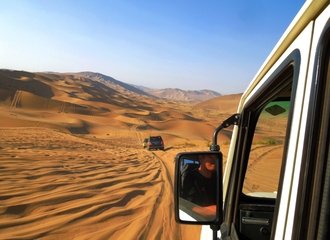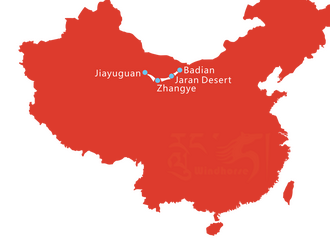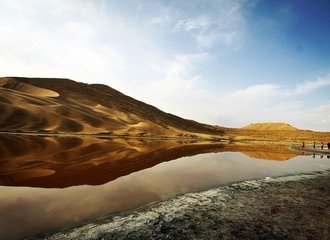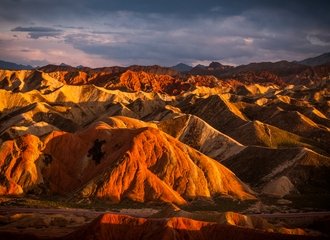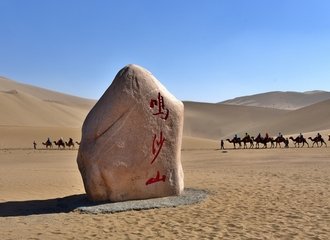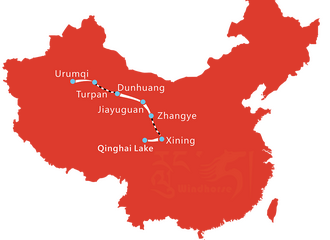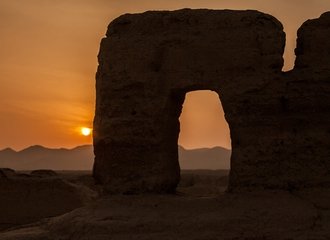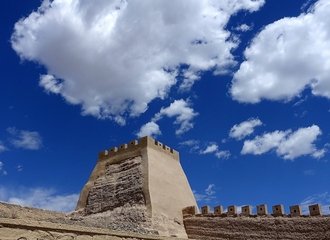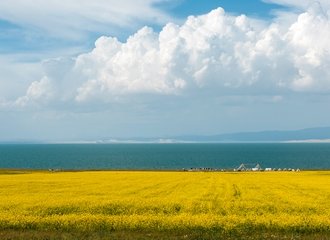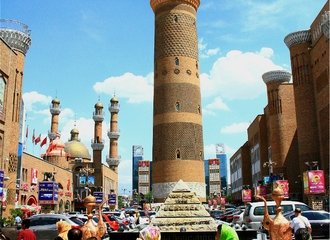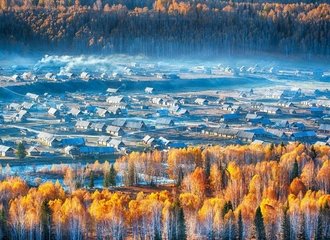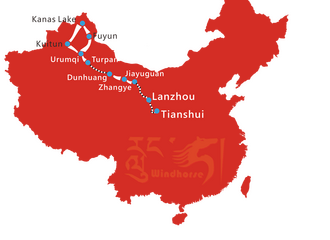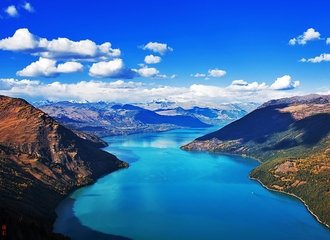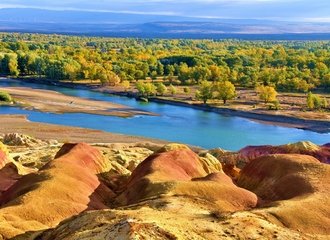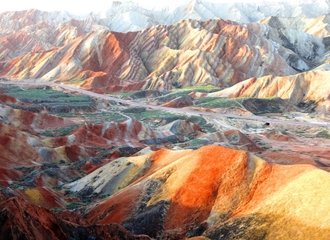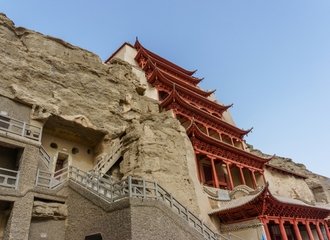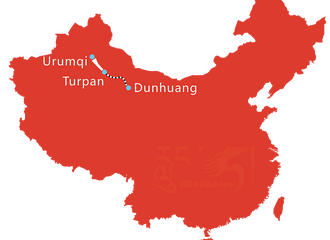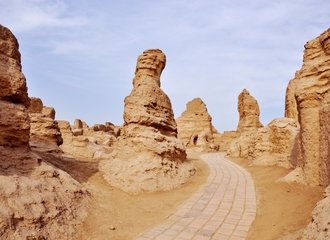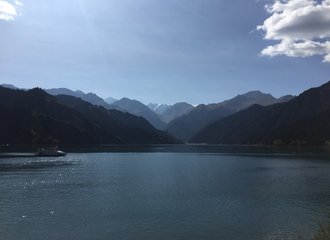Peony Flowers City - Luoyang
Located in the west of Henan Province, Luoyang is a prefecture-level city in the middle and lower reaches of the Yellow River. Luoyang has a history of more than 5,000 years of civilization, more than 4,000 years of urban history, and more than 1,500 years of history as an ancient capital. Luoyang is one of the birthplaces of Chinese civilization and the eastern starting point of the Silk Road. In history, there are 13 dynasties in total that established their capitals in Luoyang.
During the day you can visit the historical sites, and at night you can enjoy the night view of the ancient city. There are also various special snacks and folk activities waiting for you to discover and explore. Luoyang is a perfect historical city that is worthy of visiting during a China tour.
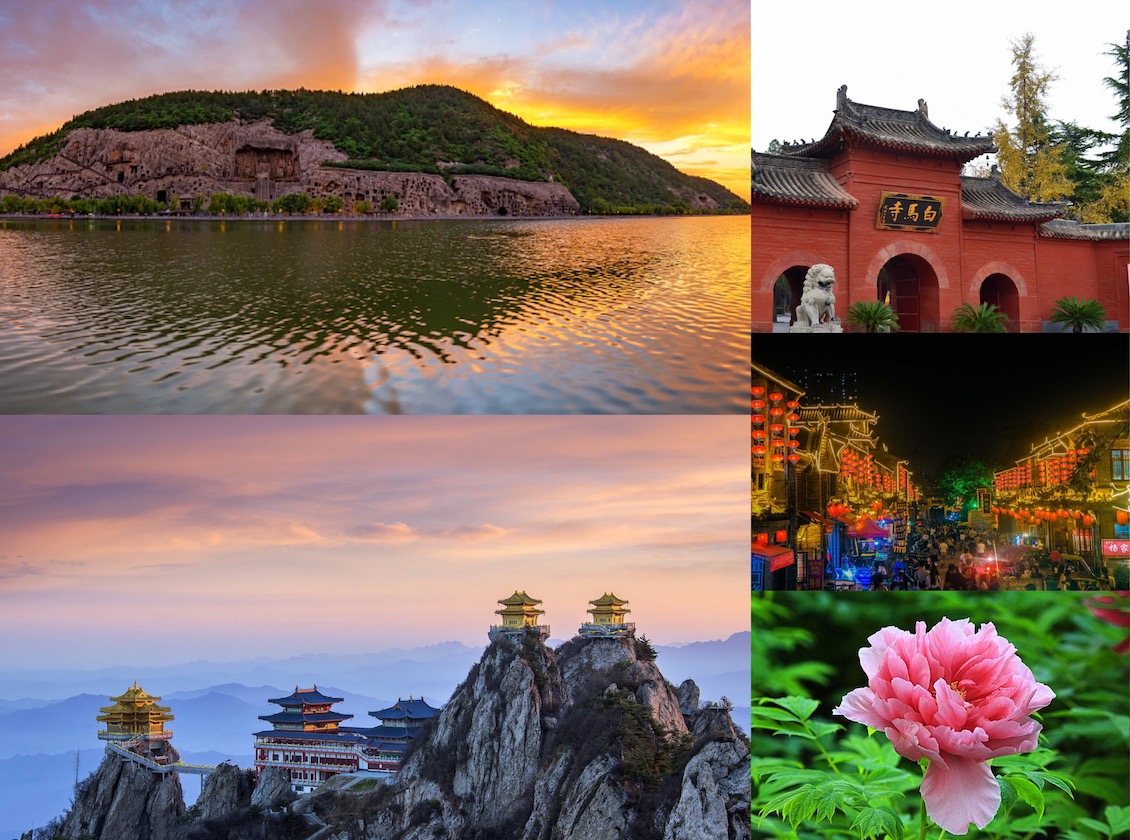

Top attractions to see in Luoyang
Shaolin Temple
Shaolin Temple is the birthplace of Chinese Zen Buddhism and Chinese Kungfu, which is also a world cultural heritage and about 1.5 hours' drive from Luoyang. The Shaolin Temple was founded in 495 AD at the northern foot of the Songshan Shaoshi Mountain facing the then capital of Luoyang. Pagoda Forest is the most special and attractive place in Shaolin Temple. It is the ancestral tombs of Shaolin Temple, which are composed of the tomb towers of the eminent monks of all dynasties. It is the largest existing pagoda in China, with 248 brick and stone pagodas. If you are a fan of Chinese Kung Fu and martial arts, don't miss the Shaolin Kung Fu show here, you will see the wonderful performances by the performers of the martial arts school.
- Opening hour: 07:30-18:00.
- Admission fee: CN¥80 Per Person.
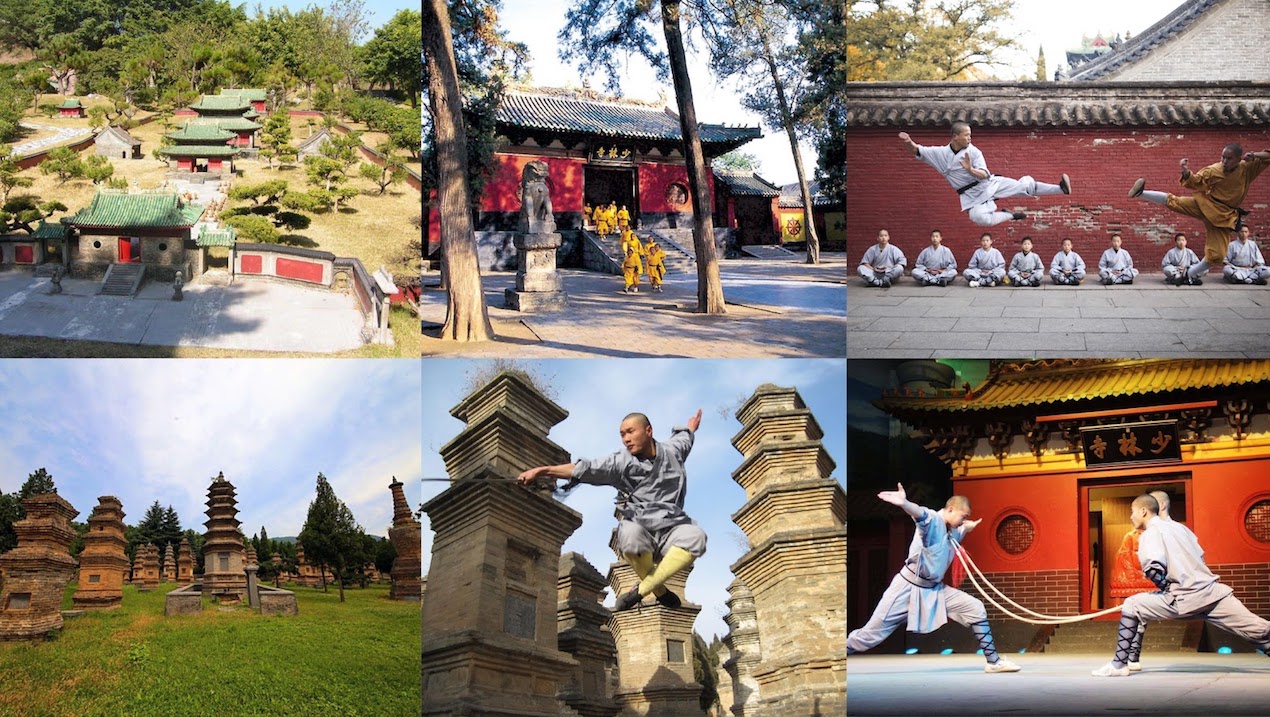
Longmen Grottoes
Dug in the Northern Wei Dynasty and have a history of more than 1,500 years, the Longmen Grottoes are the world's largest stone carving art treasure house with the most sculptures and scales. It has been rated as the "Highest Peak of Chinese Rock Carving Art" by UNESCO, ranking first among the major grottoes in China. The biggest feature of the Longmen Grottoes is that they are built on the river. The grottoes are distributed on the cliffs on both sides of the river and are connected by the Longmen Bridge. There are more than 1,300 grottoes and more than 100,000 Buddha statues.
- Opening hour: 08:00-18:30 (1 April to 31 October), 08:00-17:30 or 18:00 (off-season).
- Admission fee: CN¥90 Per Person.
White Horse Temple
White Horse Temple, China's first ancient temple, and the world-famous Garan. It was built in 68 AD and was the first government-run temple built after Buddhism was introduced to China. The White Horse Temple spread Buddhism to North Korea, Japan, and Southeast Asia, so that Buddhism was popularized in Asia, and later entered Europe and the United States, becoming a holy place for Buddhist believers all over the world.
- Opening hour: 07:40-18:00.
- Admission fee: CN¥35 Per Person.
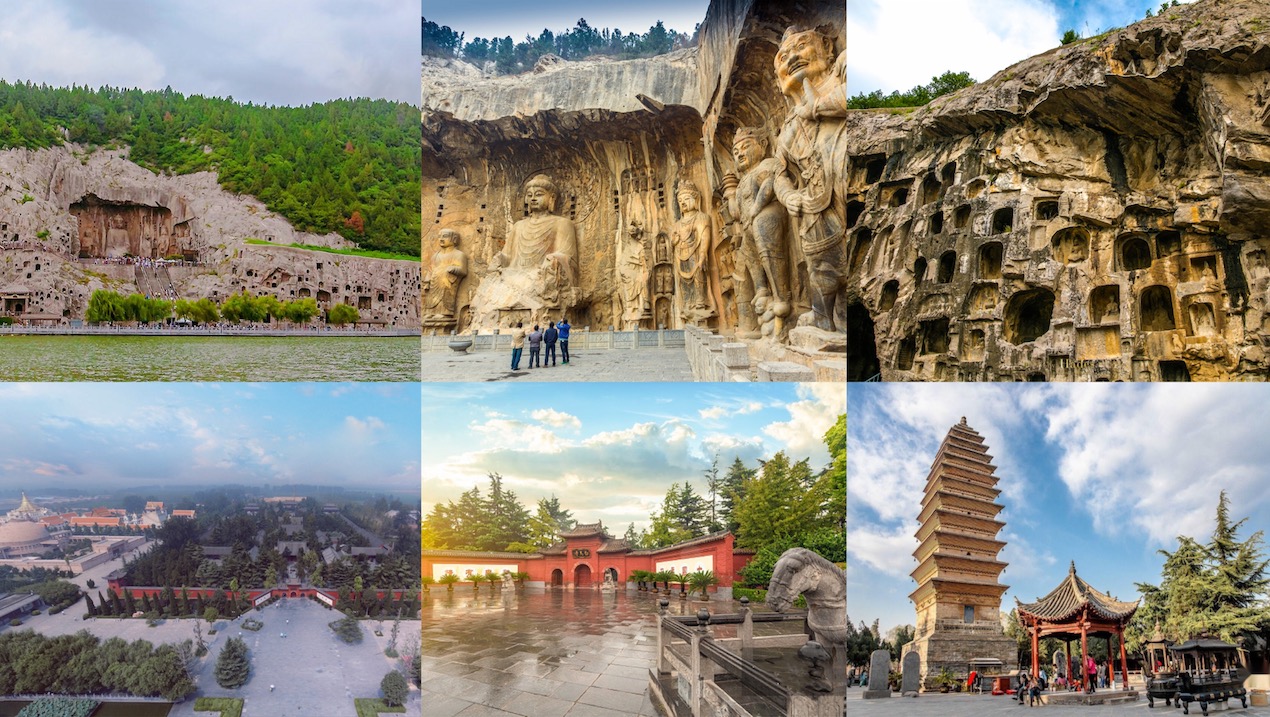
Lijing Gate
Lijing Gate was built in the Sui Dynasty (581-618 AD) in the old city of Luoyang. It has long been a place where hundreds of officials and people worship gods and is the west gate of Luoyang Ancient City. Now here is a large-scale comprehensive tourist attraction in Luoyang that integrates food, accommodation, transportation, travel, shopping, and entertainment.
- Opening hour: 08:00-20:00 (1 April to 31 October), 08:00-18:30 (off season).
- Admission fee: CN¥30 Per Person.
Luoyang Ancient Art Museum
Luoyang Ancient Art Museum is the largest museum of ancient tombs in China and the first museum of ancient tombs in the world. The museum contains dozens of tombs from various periods in ancient China, all of which were relocated from their original sites and restored and exhibited underground in the shape of tombs. Here visitors can learn about the internal environment of the ancient tomb from close range and multiple perspectives, including the tomb building and murals, unearthed cultural relics and cultural relics, etc.
- Opening hour: 09:00-17:00 (Closed on Monday).
- Admission fee: Free.
Luoyang Old Street
Luoyang Old Street has a history of more than 3,000 years, which preserves its original appearance. The crowds, the hawking vendors, and the shops on both sides are full of the flavor of the ancient capital. Here you can experience the current prosperous scene of old Luoyang, you can eat all kinds of local delicacies in Luoyang, most of which is the Luoyang Shui Xi.
- Opening hour: All-day.
- Admission fee: Free.
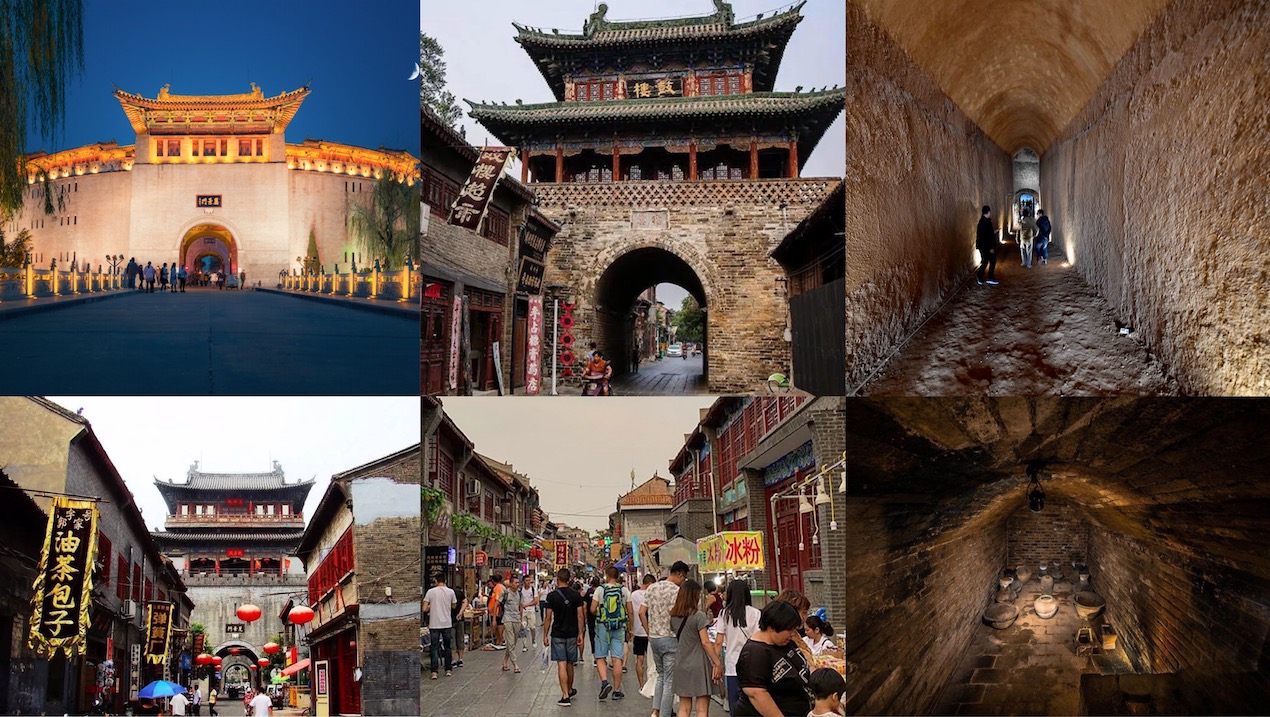
Laojun Mountain
Laojun Mountain, located in the southeast of Luanchuan County, Luoyang City, has a history of more than two thousand years and is the oldest mountain range in Taoism. At an altitude of more than 2,000, there are official halls and temple communities. In ancient times, it was regarded as a Taoist holy land. Laojun Mountain Scenic Area also contains natural landscapes such as waterfalls, virgin forests, streams, valleys, and more than 3,000 strange rocks and peaks. When the weather is good, there is a chance to see the stunning sea of clouds.
- Opening hour: 07:00-19:00.
- Admission fee: CN¥100 Per Person.
Baiyun Mountain
Located in the south of Song County in Luoyang, Baiyun Mountain is a World Geopark and China's National Science Education Base. There are 204 species of animals, 1,991 species of plants. Baiyun Mountain has 37 peaks above 1,500 meters above sea level, among which Yuhuangding is 2,216 meters above sea level, which is the first peak of Baiyun Mountain. It is a complex tourist area integrating sightseeing, summer vacation, scientific research and education, and ancient exploration. It is known as "Nature Museum" and "Wonderland on Earth".
- Opening hour: 08:30-18:30.
- Admission fee: CN¥75 Per Person.
Longtan Valley
Located in Xin'an County of Luoyang, Longtan Grand Canyon Scenic Area is a U-shaped canyon formed by purplish-red quartz sandstone cut by flowing water, with a total length of 12 kilometers. There are six natural mysteries, seven secluded waterfalls, and eight natural wonders in the scenic area, which are not to be missed. There are also many outdoor projects in the canyon, such as zip-line, rock climbing, and kayaking, which are worth experiencing.
- Opening hour: 07:00-17:00.
- Admission fee: CN¥85 Per Person.
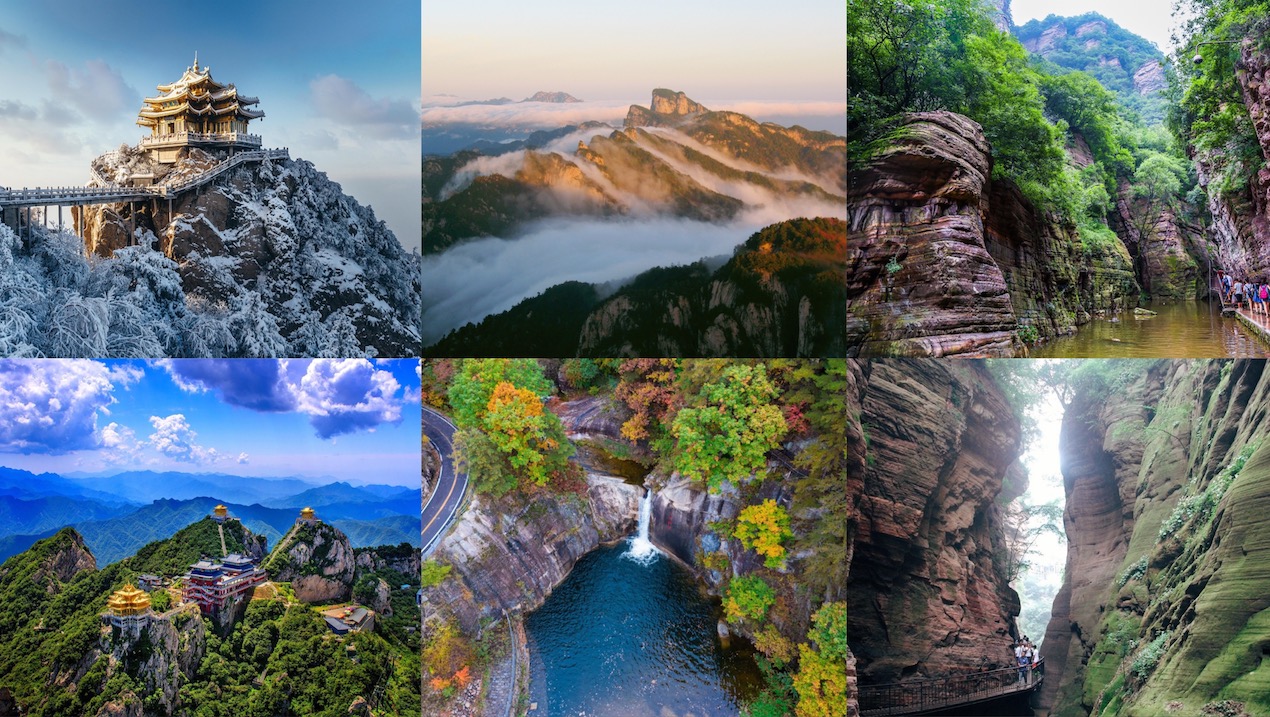

Local activities and specialties in Luoyang
Peony Flower Festival
Peony is the national flower of China, while Luoyang, the ancient capital of 13 dynasties, enjoys the reputation of "the thousand-year imperial capital and the city of peony flowers". Every year, from early April to early May, the Peony Flower Festival will be held in Luoyang. During the festival, in addition to enjoying various colors and varieties of peonies, there are also many cultural and sports activities. For example, the folk collection exhibition, the National Gateball Invitational, the rock concert, etc. Luoyang Peony Flower Festival is a large-scale comprehensive economic and cultural event integrating flower enjoying, sightseeing, economic and trade cooperation, and exchanges.
Bells of the White Horse Temple
The bell of the White Horse Temple, which is one of the eight great sights in Luoyang, symbolizes good luck and best wish. Whenever a quiet and beautiful night comes, or when the dawn comes, the temple beats the bell and the monks start chanting. The bells are melodious and floating, which makes people feel relaxed and happy even if they are far away from the temple. Every year, when the New Year is coming, many Chinese and foreign tourists travel far to come here, quietly waiting for the moment when the bell rings. They will pray for the new year, peace, health, and good luck.
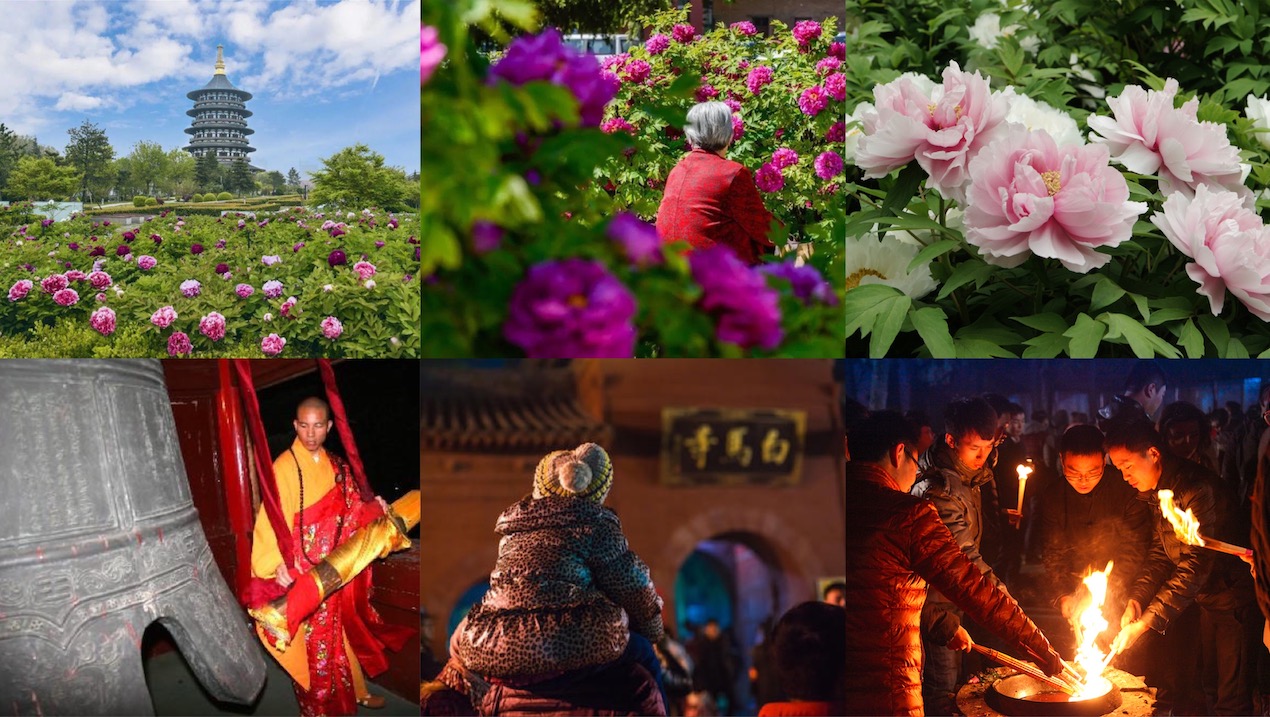
Luoyang Dukang Wine
Dukang wine is the earliest wine in Chinese written records. It was named after Du Kang (Du Kang was the king of the Xia Dynasty and a Taoist celebrity) who first made it in Luoyang, with a history of more than 2,700 years. Dukang wine can be bought in many restaurants and supermarkets. The cheapest Dukang wine can be bought at CN¥100 per bottle, and high-quality aged wine is around CN¥600 per bottle.
Tang Tri-Color Glazed Ceramics/Luo Embroidery/Luoyang Palace Lantern
Tang Tri-Color Glazed Ceramics is a treasure of the ceramic firing process, with bright colors and a strong ethnic style. You can buy some small and portable souvenirs (like horses, camels, tableware, and other Tang Sancai ceramics) for family and friends, or as home decorations. According to the fineness of the workmanship and the size, the price ranges from tens to thousands of RMB.
Luoyang embroidery is a traditional handicraft in Luoyang with a history of more than 2,000 years. Luo Embroidery has a wide range of uses, including daily necessities such as tablecloths, pillowcases, handkerchiefs, and furnishings such as screens and wall hangings.
Luoyang Palace Lantern is a characteristic traditional handicraft, a common decoration on Lantern Festival. There are many styles of Luoyang palace lanterns, which are very festive and suitable for hanging at home as decorations. It is recommended to buy foldable styles, which are easy to carry and store.
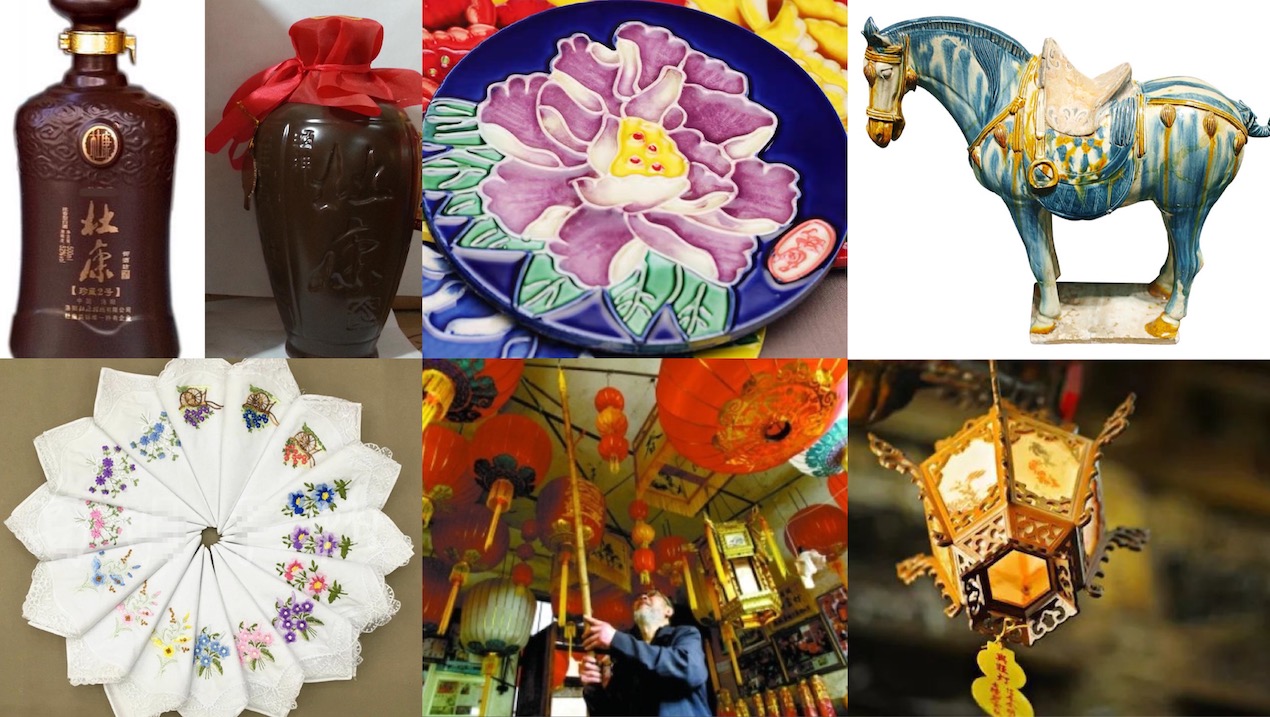

Best time to visit Luoyang
The best time to travel to Luoyang is April, May, September, and October. The weather is neither cold nor hot in these four months, and the visitors will feel comfortable. Luoyang has a warm temperate continental monsoon climate, with an annual average temperature of 11C° to 21C°.
April is the peony blooming season, and you can see colorful peony flowers in various scenic spots and streets in Luoyang. September and October are in Luoyang's autumn, the weather is fine, and Wangcheng Park holds the "Autumn Chrysanthemum Exhibition" at this time of year. The mountains and the botanical garden are full of a variety of chrysanthemum, red maple leaves, and yellow ginkgo leaves. June to August is Luoyang's summer, hot and rainy, and the temperature is relatively high. December to February is the winter in Luoyang, cold and dry, and the lowest temperature can reach minus 8 degrees Celsius. If you are lucky, you can see winter snow, the silver-clad Luoyang is more ancient.
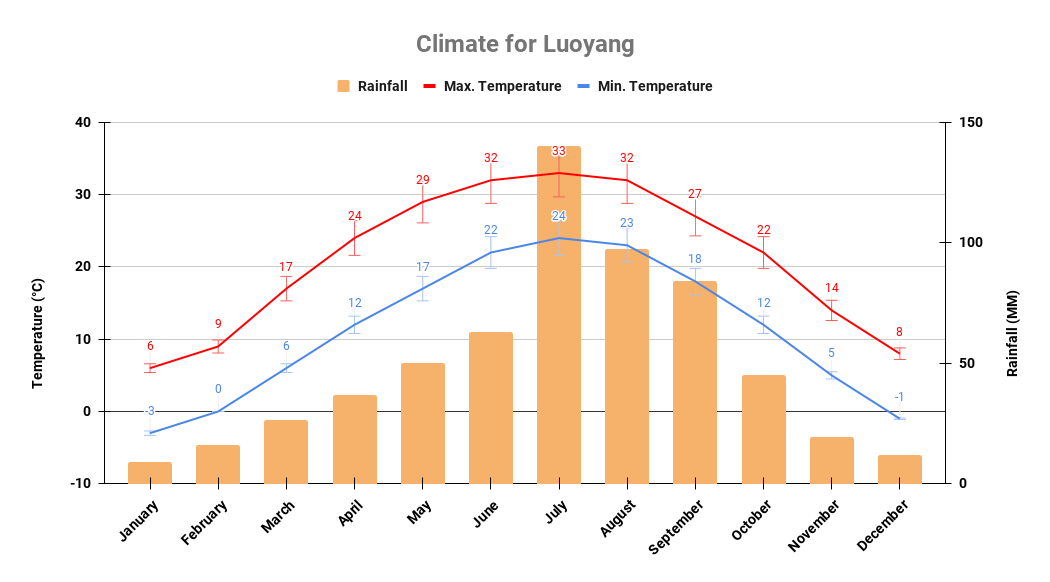

How to get to Luoyang
Luoyang has very convenient transportation. Major cities in China can be reached directly by planes and trains. The fastest way to reach Luoyang is by plane. Trains are also a mode of travel chosen by many people.
Luoyang Beijiao Airport is located in Mangshan, the northern suburb of Luoyang City, 10 kilometers away from the urban area, and can be reached in about half an hour. In addition to daily flights to and from Luoyang in major domestic cities (Beijing, Shanghai, etc.), international routes such as Bangkok, Osaka, and Hanoi are also opened.
There are four railway stations in Luoyang, of which Luoyang Railway Station and Longmen Railway Station are the main ones. Luoyang Longmen Railway Station is a high-speed railway station, which takes about 20 minutes to reach the Longmen Grottoes and 40 minutes to downtown Luoyang. Outside the train station, there are regular taxis and multiple buses leading to the city. It takes about 4 hours from Beijing to Luoyang by high-speed rail and 1.5 hours from Xi'an.

Lodging and dining in Luoyang
Lodging in Luoyang
Nearly half of the tourists will choose to stay in the Xigong District, which is located in the center of Luoyang and has convenient transportation to Luoyang Railway Station, Longmen Grottoes, and White Horse Temple. There are Wangcheng Park, Luoyang Museum, Luopu Park, and other attractions in the area. Many tourists also choose to live in the old city in east Luoyang. Here is the heritage of Luoyang’s history that has been passed down to today. The streets are narrow but have a unique charm. If you're in a hurry, consider staying at a hotel near the Luoyang Longmen station.
According to the decoration, conditions, facilities and low and peak seasons of the hotels, the average price of ordinary budget and 3-star hotels are CN¥200-400 per night, and the price of 4-star hotels are CN¥400-800 per night, and the price range of 5-star hotels are CN¥700-1,400 per night.
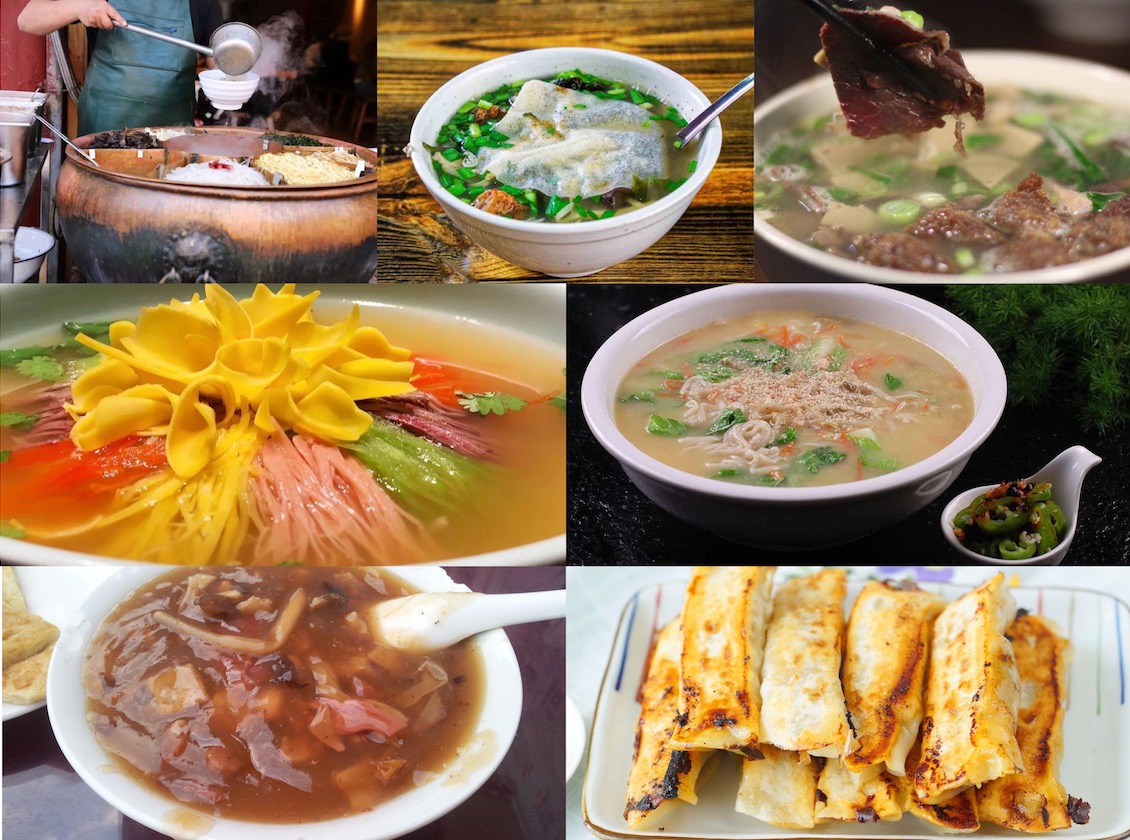
Food in Luoyang
Luoyang, which is located in the central plains of China, has experienced 13 dynasties, where delicacies from all over China gather here, and the dishes are rich and varied. There are many varieties of Luoyang soup, which can be called characteristics. For example, Bufan Soup, Beef/Donkey Meat Soup, Peper and Chili Soup, etc. are all representatives of Luoyang soup. Usually, the price of various soups is around CN¥8-15 per bowl. Noodles and pasta are also very popular in Luoyang, there are various noodles, cakes, pastries, and so on. The recommended are Pan-Fried Dumplings (also called potstickers) and Hutu Noodles, the price range of a dish/bowl is generally CN¥10-20 based on the size or quantity.
Luoyang Shui Xi, Luoyang Peony Flower Fair, and Longmen Grottoes are also called the Three Wonders of Luoyang. Luoyang Shui Xi is a traditional famous banquet in Luoyang, which started in the Tang Dynasty and has a history of more than 1,000 years. It is one of the oldest banquets preserved in China. The so-called "Shui Xi" in Chinese means soup in hot dishes. To enjoy the Shui Xi, usually 3-6 people order 2-3 essence dishes of Luoyang Shui Xi to eat, according to the restaurant's specifications and dishes, between CN¥40-80 per capita.

